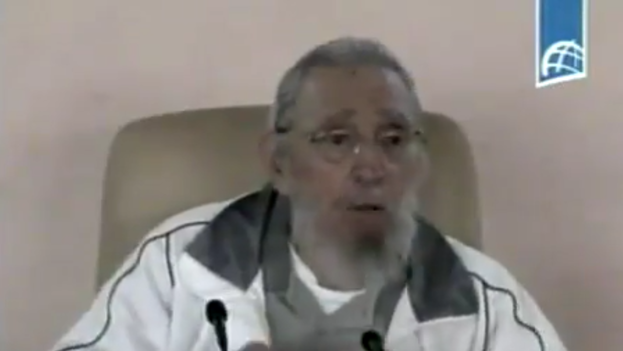
![]() 14ymedio, Havana, 7 April 2016 – Former Cuban president Fidel Castro reappeared in public during a tribute to Vilma Espin, the wife of his brother Raul. Primetime television news broadcast images of Castro while he talked to students and teachers of the educational complex in Havana that bears the name of his brother’s deceased wife.
14ymedio, Havana, 7 April 2016 – Former Cuban president Fidel Castro reappeared in public during a tribute to Vilma Espin, the wife of his brother Raul. Primetime television news broadcast images of Castro while he talked to students and teachers of the educational complex in Havana that bears the name of his brother’s deceased wife.
Fidel Castro, who turns 90 in August, participated in the activities of remembrance for the founder of the Federation of Cuban Women (FMC) on the 86th anniversary of her birth.
Fidel Castro said that “Vilma would be very happy today, because she would see why she sacrificed her life, because he who dies fighting for the Revolution departs leaving their energy on the path and fighting for it.” He added that “for those of us here we consider it a privilege to be in this school today, because this kind of school is approaching a kind of a dream. I tried to remember if I knew of a place where there was a school like this. There is not.”
Vilma Espin Guillois School, in the Havana municipality of Playa, was opened on 9 April 2013, and currently has 43 employees including teachers, assistants and staff. The school has students from nursery school through sixth grade and for the upcoming year is expected to offer secondary education for 60 students.
Fidel Castro has not appeared in public since 9 January 2014, when he visited the studio of artist Alexis Leyva Kcho in the Havana neighborhood of Romerillo for the opening of an exhibition.
A few days after Barack Obama concluded his visit to Cuba, the former Cuban president lambasted him in a “Reflection” titled Brother Obama. The text, often disjointed and nonsensical, was intended as a response to the speech by Obama in Havana’s Gran Teatro, especially against his declaration that he wanted to leave behind “the last vestiges of the Cold War in the Americas.”
